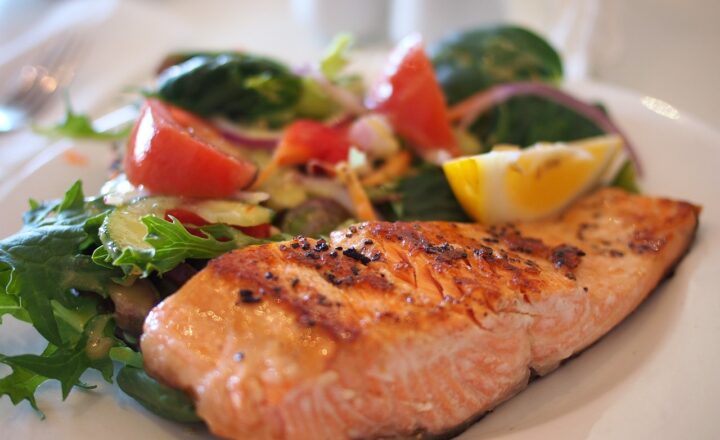Food Trends of the 2020s: What’s Hot and What’s Not in Culinary Arts
November 18, 2024

The culinary landscape has always been dynamic, evolving alongside societal changes, technological advancements, and cultural shifts. As we navigate the decade of the 2020s, a new array of food trends is emerging, reshaping how we approach dining, cooking, and eating. From health-conscious choices to innovative technologies in food preparation, the following sections explore what’s trending and what’s losing its flavor in the culinary arts.
1. Plant-Based Eating: A Permanent Shift
Plant-based diets have transitioned from niche trends to mainstream lifestyle choices. People are increasingly opting for meat alternatives not only for health reasons but also due to environmental concerns and ethical considerations regarding animal welfare.
Some significant aspects of this trend include:
- Innovative Meat Alternatives: Brands like Beyond Meat and Impossible Foods have pioneered products that mimic the taste and texture of meat, making it easier for consumers to transition to plant-based diets.
- Flexitarianism: The flexitarian approach encourages reducing meat consumption while embracing more plant-based foods. This trend caters to individuals seeking balance and sustainability without fully committing to a vegetarian or vegan lifestyle.
- Nutritional Focus: Consumers are looking for plant-based options that don’t sacrifice nutrition. The use of whole foods, grains, legumes, and superfoods in plant-based cooking is becoming prominent in restaurants and home kitchens alike.
While the trend of plant-based eating is flourishing, traditional meat-centric offerings must adapt to meet this demand if they wish to stay relevant.
2. Health and Wellness Foods: More Than Just a Fad
Health and wellness continue to dominate food trends this decade, with consumers seeking foods that contribute positively to their overall well-being. Key components include:
- Functional Foods: Foods enhanced with additional nutrients are gaining popularity. Examples include probiotics in yogurt, added vitamins in snacks, and adaptogens in beverages designed to alleviate stress and boost immunity.
- Gut Health Awareness: With increasing knowledge about the gut-brain connection, people are focusing on foods that promote digestive health, such as fermented foods like kimchi, kombucha, and yogurt.
- Clean Label Products: Transparency in food labeling has become crucial. Consumers are favoring products that are free from artificial ingredients, additives, and preservatives, promoting a cleaner way of eating.
As health-conscious consumers continue to make informed choices, the food industry is responding by prioritizing transparency and health benefits.
3. Technology and Food: The Rise of the Digital Kitchen
The culinary world is being transformed by technology, making cooking more efficient and enjoyable. Key technological trends shaping the food sector include:
- Smart Appliances: Devices such as smart ovens, pressure cookers, and microwaves can now be programmed and controlled via smartphone applications, enhancing convenience and precision in cooking.
- Meal Delivery Services: Subscription-based meal kits and grocery delivery services have surged in popularity, saving consumers time and offering easy access to a variety of fresh ingredients and recipes.
- Online Food Communities: Social media platforms and food blogging sites foster online communities where home cooks share innovative recipes and cooking techniques, fundamentally changing how culinary knowledge is disseminated and consumed.
This digital movement in the kitchen caters to a tech-savvy generation eager for convenience and personalized culinary experiences.
4. Sustainable Cooking: Conscious Choices
As climate change awareness grows, sustainability has become a significant consideration in culinary practices. Characteristics of this trend include:
- Locally Sourced Ingredients: Chefs and home cooks alike are prioritizing seasonal, local produce to reduce carbon footprints, support local farmers, and ensure freshness.
- Waste Reduction Techniques: Creative strategies for minimizing food waste, such as utilizing vegetable scraps for broth or composting, are increasingly adopted in both home kitchens and restaurant practices.
- Eco-Friendly Packaging: Many brands are rethinking their packaging to use biodegradable, recyclable, or reusable materials, resonating with eco-conscious consumers who prioritize sustainability in their purchasing decisions.
Sustainability in culinary practices is becoming a necessity rather than a trend, leading to lasting changes in how food is sourced and consumed.
5. Global Flavors and Fusion Cuisine
As cultural exchange continues to facilitate diverse dining experiences, global flavors are at the forefront of the culinary scene. Notable trends include:
- Culinary Diversity: The fusion of flavors from different cultures is capturing consumers’ interest, resulting in dishes like Korean-Mexican tacos and Indian-Italian curry pizzas, which offer unique and exciting dining experiences.
- Inclusion of Lesser-Known Cuisines: More restaurants are exploring authentic dishes from lesser-known culinary traditions, encouraging diners to experience the rich flavors of Ethiopian, Filipino, and Caribbean cuisines.
- Home Cooking Influences: Access to global recipes online is inspiring home cooks to experiment and create dishes that reflect diverse culinary traditions from around the world.
As societies become more interconnected, gastronomical experiences will only continue to grow in variety and complexity.
Conclusion: The Future of Culinary Arts in the 2020s
The culinary arts are witnessing a renaissance in the 2020s, driven by evolving consumer preferences, technological advancements, and a deeper understanding of sustainability and health. As trends come and go, one thing remains clear: food is much more than sustenance; it is a reflection of culture, identity, and innovation. This decade will likely bring even more exciting developments in the world of food, making it an exhilarating time for chefs, consumers, and food lovers alike. By staying attuned to these trends, culinary enthusiasts will navigate the evolving landscape, embracing new flavors, ingredients, and methods along the way.
Whether you’re a professional chef, a home cook, or someone who simply loves to explore the world of food, the 2020s offer an exhilarating playground for culinary experimentation and discovery.







